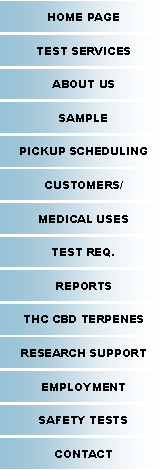|
Tetrahydrocannabinolic Acid (THCA) THCA is the main constituent in raw cannabis. THCA converts to Δ9-THC when burned, vaporized, or heated at a certain temperature. THCA, CBDA, CBGA, and other acidic cannabinoids hold the most COX-1 and COX-2 inhibition, contributing to cannabis’ anti-inflammatory effects. This cannabinoid also acts as an anti-proliferative and anti-spasmodic.
Tetrahydrocannabinol (THC) The most abundant cannabinoid present in marijuana, THC is responsible for cannabis’ most well-known psychoactive effects. THC acts as a partial agonist at the CB1 and CB2 receptors. The compound is a mild analgesic, or painkiller, and cellular research has shown that it has antioxidant activity through non-cannabinoid receptor interactions.
Tetrahydrocannabivarin (THCV) THCV is a minor cannabinoid found in only some strains of cannabis. The only structural difference between THCV and THC is the presence of a propyl (3 carbon) group, rather than a pentyl (5 carbon) group, on the molecule. Though this variation may seem subtle, it causes THCV to produce very different effects than THC. These effects include a reduction in panic attacks, suppression of appetite, and the promotion of bone growth. THCV acts as an antagonist at the CB1 receptor and a partial agonist at the CB2 receptor |



